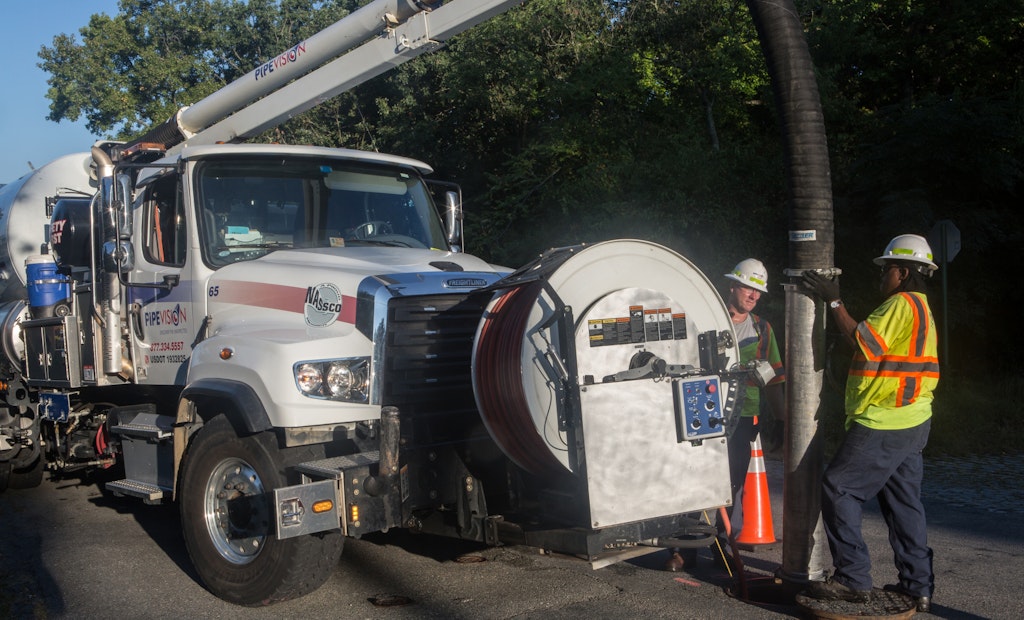
Pipevision in Ashland, Virginia, is constantly reinvesting in new, better equipment in order to optimize the time spent out in the field. "Ultimately, that allows us to provide clients with very competitive prices," says Dan Clatterbuck, co-owner and vice president.
Interested in Trucks?
Get Trucks articles, news and videos right in your inbox! Sign up now.
Trucks + Get AlertsThere has been a lot of equipment purchasing at SAK Construction in O’Fallon, Missouri, over the last decade to say the least. The pipe rehab and inspection firm started in 2006 with five employees and today employs more than 300 people, serving customers nationwide with branch offices in Baltimore; Phoenix; Tampa, Florida; and Rocklin, California.
Because of its size, a key part of SAK Construction’s equipment purchasing strategy is sticking with common vendors.
“Standardization is a big thing for us,” says Steve Hirtz, vice president of operations for SAK Construction. “When you grow a company from zero to as big as we are and you’re spread all over the United States, standardization is important for easier maintenance, training support and purchasing power for repair parts. If employees know about a particular piece of equipment, they can easily move from one piece to another and will still know how to maintain it and operate it efficiently. It’s really no different than Southwest Airlines running all Boeing 737 airplanes.”
Here are some ways other companies have approached equipment purchasing. See if their stories can spark an idea you can incorporate into your own business:
Finance big equipment purchases, but do so carefully. “I established really good credit,” says Matt Mertz of his early years running his own plumbing business. “No matter how much money I earned, I always made sure I saved some and made the payments. I was never afraid to buy the things I really needed, but I was smart about it, too — I didn’t get in over my head financially. I’d wait until a job required a certain tool or piece of equipment but made sure I could make money with it afterward, too.”
Mark Vice, co-owner of Fayette Drain & Sewer Service in Fayette, Alabama, has also not shied away from making a commitment to add new equipment. He makes sure it’s a calculated risk rather than an outright gamble.
“I’m always sure I have the business before I buy equipment,” Vice says.
For example, before he committed to a vacuum truck, he surveyed owners of fast-food chain restaurants to see if they’d hire him to clean their grease traps. After receiving about a dozen verbal commitments, he made the truck purchase.
“I put the math together and figured out how many customers it would take to enable me to make the payments,” he says. “At that point, I figured any septic work would be a bonus.”
Carefully weigh the pros and cons of buying new versus used, and find the best fit for your business. Pipevision in Ashland, Virginia, has found a lot of benefits by constantly reinvesting in new equipment.
“We’re always trying to find the best equipment that can help us limit confined-space entry and optimize time in the field — get as much done as possible in the shortest amount of time. Ultimately, that allows us to provide clients with very competitive prices,” says Dan Clatterbuck, co-owner and vice president.
“In addition, newer equipment breaks down less frequently, which increases customer satisfaction. I remember a trial run we did with a lining company for which we now do a lot of work. We went out on the job with our best equipment; and now, we have a contract to work for them. They were ecstatic when they saw our equipment because the company they used before had equipment with hydraulic oil leaks. Sometimes that equipment would run, and sometimes it wouldn’t.”
But going the new equipment route isn’t always the optimum answer. When brothers Jason and Josh Franke were growing their business, A-1 Sewer and Drain in Rapid City, South Dakota, they said they wanted to be careful about expanding too quickly. That sometimes meant going with used equipment, even if they wanted something brand new.
“We’ve seen too many businesses go under by expanding too fast — hiring too many employees at once or buying too much new equipment,” Jason says. “We always looked at what we owed on trucks and equipment and never took too large a leap. If we wanted a new vac truck but could only afford a refurbished unit, we went with the refurbished truck. We never took too large a risk.”
Thoroughly research all potential financing sources. When Kerry Roslinski started up his business, Pipe-Eye Sewer Services in Bradford, Pennsylvania, he did some research and learned about low-interest loans offered by the city of Bradford’s Office of Economic and Community Development. It helped him purchase one of his first major pieces of equipment, a refurbished CUES grout truck.
“They supply half the loan, and a bank provides the other half at interest rates that are about half of those charged by regular banks,” Roslinski says. “I also used another resource called the North Central Pennsylvania Regional Planning and Development Commission, which covers a four-county area here. All you have to do is go to a local county government and ask if there’s any financial assistance available. This is how we financed all our equipment except for the first vacuum truck.”
Even if you have short-term plans for a piece of equipment, consider buying it over leasing. “I feel it is a waste of money on my end. I would rather own something,” says Ashley Hartness, owner of All Around Pumping Service in Toledo, Ohio, about what she thinks of leasing equipment. “Even at the end of two years, if it is not working out the way I need it, I can sell and get some money back somehow. Each piece of equipment you buy makes you money.”





